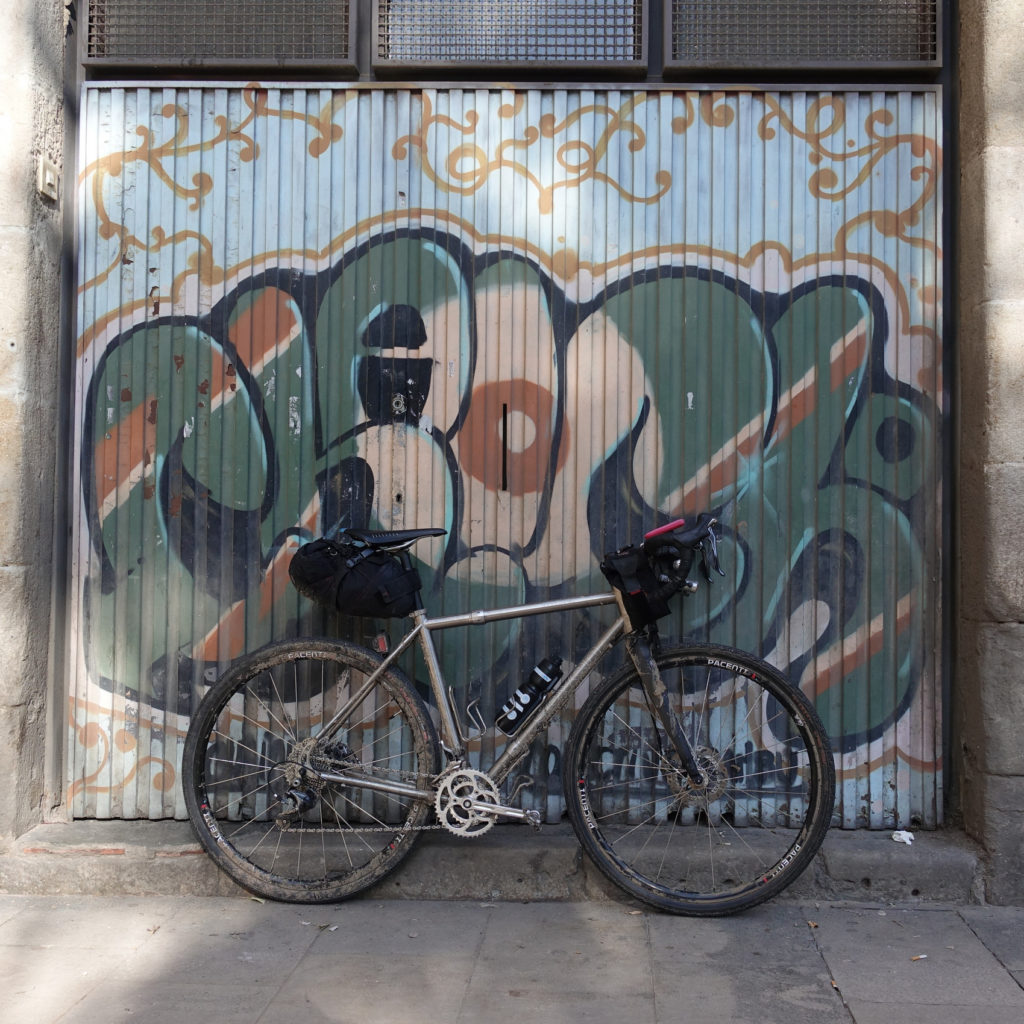We build a lot of travel bikes. Increasingly, riders are realizing the value, not only of riding in far flung places, but in riding their own bike along to do it. BTC couplers and travel cases make this dream a much simpler reality than it might at first appear. We like to think about more than just getting the bike into the case though.

Part of the value of the way we build bikes, one-at-a-time, for the specific people who will ride them, is that we can be thoughtful about the whole bike and how it serves the larger goal.
With that in mind, and with a request from one of our readers, we thought we would break down, in detail the bike above, one of the bikes we brought with us on our most recent trip.
This bike is optimized for traveling just about anywhere in the world. The kit is chosen for easy service at any reasonable bike shop on the planet.
- Model: Evergreen SL
- Kit: A mix of Dura Ace and Ultegra. Ultegra rear derailleur so the rider could use a wider range cassette. Shimano because it’s the most popular and common kit on the planet so easiest to get replacement parts.
- Gearing: 11-32t cassette with 44/28t chainrings. 11-32t rather than a wider range cassette because it’s easy to replace while traveling if needed.
- Crank: Rene Herse. Why? We used this crank in order to get a lower gear ratio for steep technical climbing. Herse cranks use a classic tapered and threaded bottom bracket for easy service while traveling.
- Saddle bag: Revelate Viscacha
- Handlebar bag: Bedrock bags Tapeats Handlebar Bag. We like this because it has a waterproof closure at the top. Easy to access.
- Tires: Clement MOS 40c tires. With tubes. Tubeless is nice to ride, but presents serviceability issues when traveling.
- Wheels Pacenti rims with White Brothers hubs. Centerlock for traveling. Classic hook spokes for ease of service. 700c wheels because they are ubiquitous anywhere in the world. The bike also works with 27″ wheels — if you’re really in the boonies — and 650b or 27.5″ if needed for some reason.
- Brakes: Mechanical Shimano CX77. These work really well for mechanical discs (which are easier to set up and break down) and are very low service.
- Bar, stem, post: Seven parts. Aluminum and titanium, so they are as durable as possible.
- Pedals: XTR
- Saddle: Fizik Arione
- Lights: Light & Motion Urban 1000s. Easy to mount, easy to charge, light weight, multi-function, helmet mount and bar mount.


